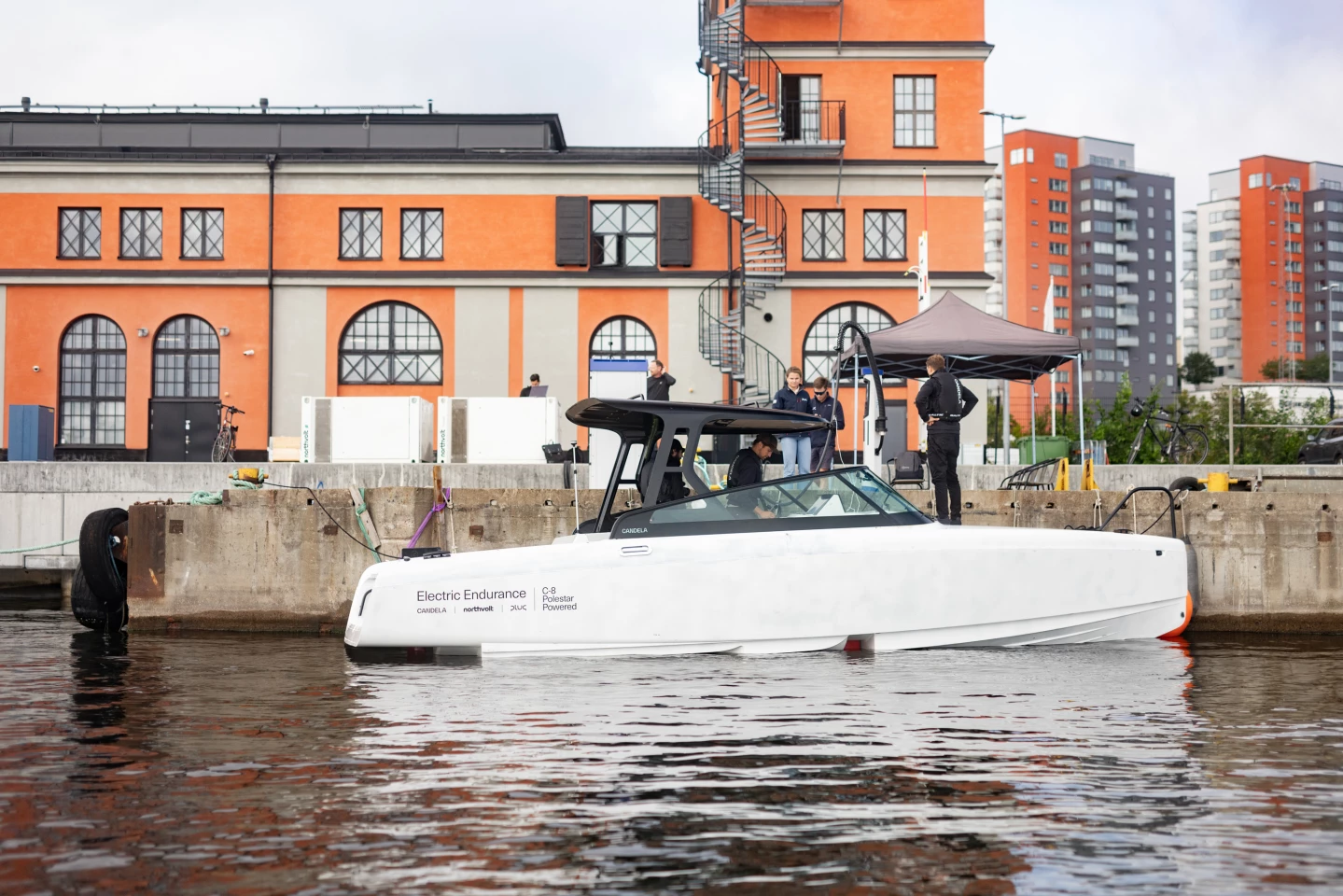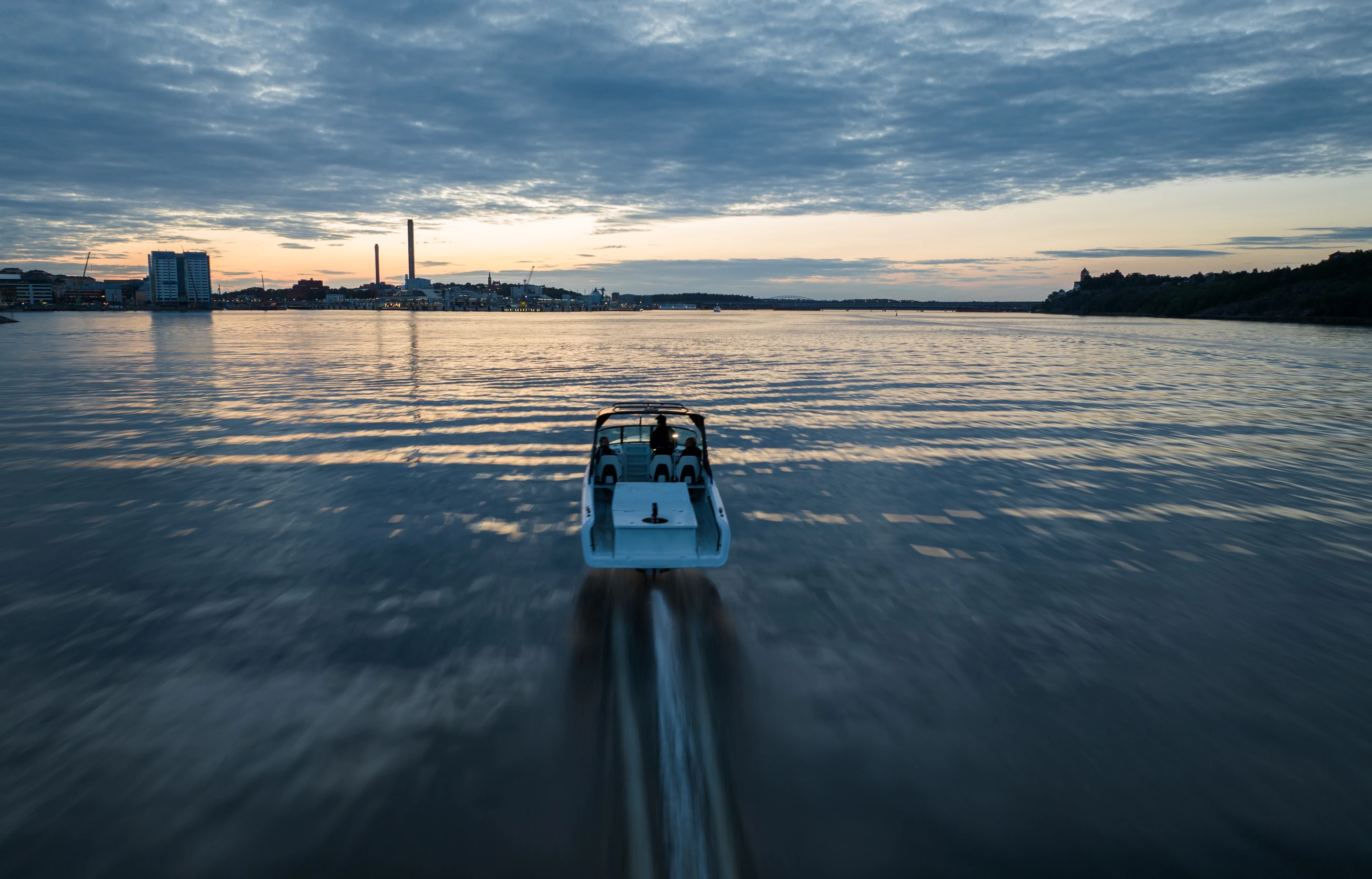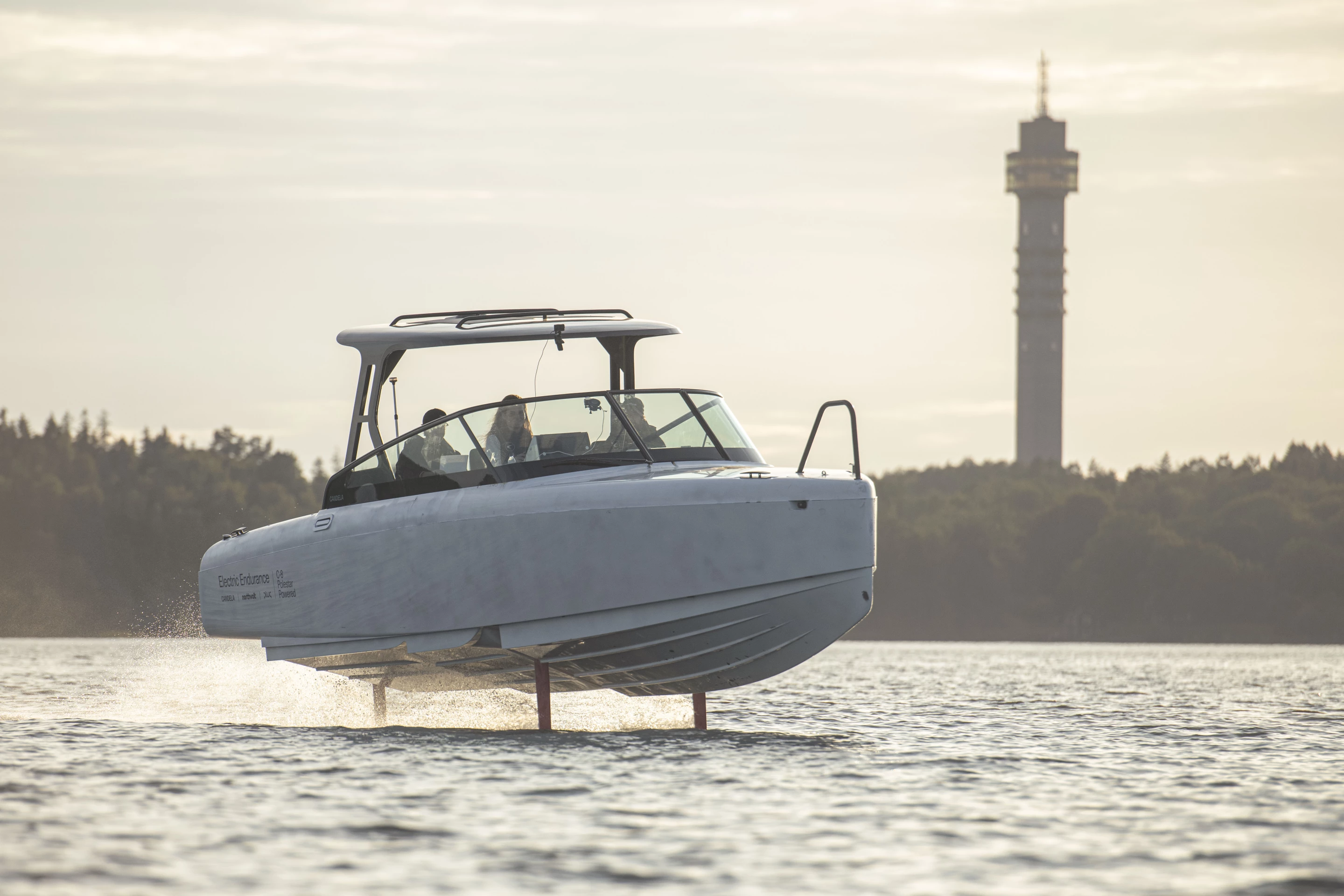In an effort to demonstrate that electric boating is ready to clean up the marine transport sector now, Swedish e-boat maker Candela partnered with Northvolt and Plug for a long-distance challenge that saw the latest C-8 Polestar Powered prototype clock up 420 nautical miles over a 24-hour period.
"This feat shows that fast, electric waterborne transport over long distances is viable today, not a distant future," said Candela founder and CEO, Gustav Hasselskog, who was at the helm during the endurance challenge.
At cruising speed, the C-8 rides above the water courtesy of hydrofoiling technology, which makes for a smoother, more energy efficient journey. This flavor of the electric leisure boat was launched back in 2021, with the company partnering with luxury EV brand Polestar earlier this year to install the same 69-kWh battery bank and DC fast-charging tech used in the Polestar 2 electric car.

Candela joined forces with battery maker Northvolt and charging station supplier Plug for the distance challenge, which involved speeding around a 20-nautical-mile looped circuit between Frihamnen and the island of Tynningö in the Stockholm archipelago over a 24-hour period.
Much of the time, the C-8 prototype traveled at full speed of 27 knots, though the average speed for the challenge overall was 17 knots – taking into account the charging breaks.
In all, the foiling boat stopped 17 times at the Plug DC charger installed on the quay outside Candela's office, which was connected to Northvolt's Voltpack modular battery system. Each 18-minute top-up, at an average of 118 kW, took the onboard battery from around 13% capacity to 66%.
"Instead of making heavy investments in upgrading the local grid, islands can deploy battery systems like Voltpack to ensure that there's enough power available for fast charging, which could be a more cost-effective and quicker solution," said Candela in a press statement.

The C-8 prototype managed to travel 420 nautical miles (777 km) over the 24-hour challenge, consuming some 685 kWh of energy along the way.
As well as demonstrating that, with appropriate investment in a marine charging infrastructure, electric leisure/commercial waterborne transport could be possible in the short term, the challenge also "shows the potential of our upcoming ferry, Candela P-12, for international routes in the Baltic sea and abroad." The video below has more.
Source: Candela









